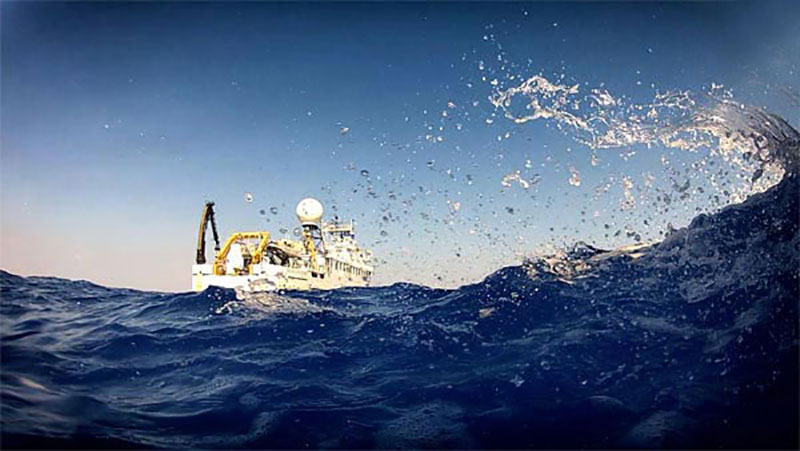
by Martha Nizinski, National Marine Fisheries Service, Northeast Fisheries Science Center
LCDR Marc Moser, National Ocean Service, Office of Coast Survey
Jeremy Potter, Office of Oceanic and Atmospheric Research, Office of Ocean Exploration and Research

Three NOAA ships are directly involved with the Atlantic Canyons Undersea Mapping Expeditions. In addition to cruises on NOAA Ships Hassler, Bigelow, and Okeanos Explorer, a joint NOAA-Bureau of Ocean Energy Management expedition on the NOAA Ship Nancy Foster will conduct complementary work on deepwater canyons off Delaware, Maryland, and Virginia. Image courtesy of the NOAA Office of Ocean Exploration and Research. Download larger version (jpg, 1.5 MB).
Between February and August 2012, a team of NOAA and external partners will conduct a mapping ‘blitz’ focused on deepwater canyons off the northeastern seaboard.
In preparation for this series of Atlantic Canyons Undersea Mapping Expeditions (ACUMEN), a team of NOAA and non-NOAA partners identified priority frontier areas along the continental shelf and slope. In total, five expeditions will gather baseline information to support science and management needs. The expeditions will highlight the complementary capabilities of three NOAA ships: Okeanos Explorer, Ferdinand R. Hassler, and Henry B. Bigelow.

Scientists and managers identified this five-canyon area as the second highest geographic priority. The map displays bathymetry collected during the first ACUMEN cruise. NOAA Ship Hassler will complete mapping of the area in June with high-resolution coverage of the canyon heads. Image courtesy of the NOAA Office of Ocean Exploration and Research. Download image (jpg, 117 KB).
The shelf break and slope off the northeastern United States support a diversity of habitats including more than 70 canyons ranging from depths of ~100 meters to ~3,500 meters. Many scientists and managers believe the canyons provide a refuge for a variety of fauna including species of corals, fish, and other animals.
While some canyons have been studied previously, most are poorly known and are of high interest to federal and state agencies with research and management responsibilities.
NOAA priorities for ACUMEN include the following combination of science, education, outreach, and data management objectives:

Google Earth map showing general priorities and planned coverage areas for 2012 ACUMEN operations, overlaid on existing bathymetry acquired by NOAA Ships Nancy Foster and Okeanos Explorer. Planned areas for high resolution mapping by Hassler are overlaid in red. NOAA Ship Bigelow will use a towed camera system to ground-truth areas mapped by the other ships. A complementary joint NOAA-Bureau of Ocean Energy Management (BOEM) project on the Nancy Foster is investigating canyons to the south of ACUMEN. Mid-Atlantic Regional Council on the Ocean priorities will be addressed during both the ACUMEN and NOAA-BOEM projects. (Actual mapping and sensor coverage achieved may differ from plan due to weather conditions, technical issues, and real-time data analysis and reprioritization.) Image courtesy of the NOAA Office of Ocean Exploration and Research. Download image (jpg, 80 KB).
NOAA Partners:
External Partners:
Key partners in the NOAA-Bureau of Ocean Energy Management project include the U.S. Geological Survey, Continental Shelf Associates, University of North Carolina-Wilmington, and the Oregon Institute of Marine Biology.